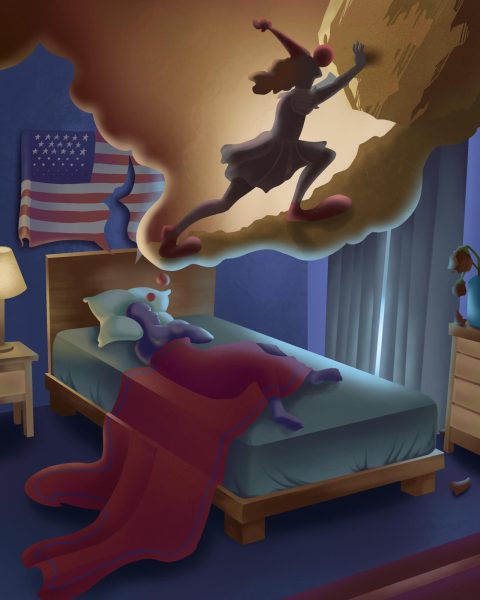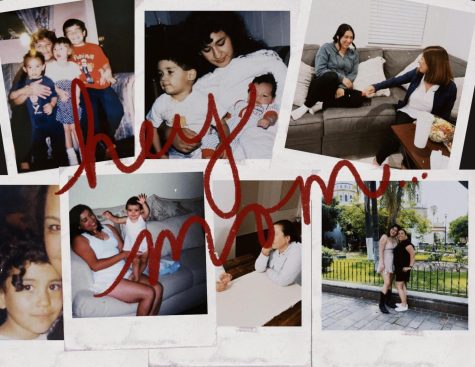Behind the Mask
Often misdiagnosed, bipolar disorder can make a person think they’re crazy, violent, and out of control.
“Fuck you!” I screamed at my parents in an explosion of anger as I slammed the back door. My father chased me outside, trying to prevent me from getting into my car, but I was faster than he was. I locked the doors as he lifted the passenger side door handle.
“Get out of this damn car, Jennifer Marie!” He yelled frantically.
“Fuck you!” I screamed again.
I sped down the road, my tires screeching as I drove off seething with anger. I drove to a parking lot nearby my parents’ house, speeding dangerously the whole time, and broke down in tears.
This was my normal. This happened all the time, and I didn’t understand why I couldn’t control my anger. What had set me off this time? My parents had asked me to make sure the candles in my room weren’t lit when I left the house. When they made that request, I flew off the handle and even as I was screaming expletives at them, and telling them how much I hated them I didn’t understand why. I knew it was a perfectly reasonable thing to ask of me, and I certainly didn’t hate them.
My dad text me and told me that if I was going to treat him and my mother that way, then I was no longer welcome in his home. But I was still too angry and too stubborn to apologize. I called my boyfriend who drove nearly 30 miles to calm me down and spent the night at my best friend’s house.
I’ve referenced in previous articles that I’ve suffered from depression since I was 10-years-old. I woke up the next morning in my friend’s bed feeling horribly depressed. I was barely able to hold back my tears at work that day.
This was my cycle. A violent explosion of anger, or persistent irritability, depression and uncontrollable tears, then I’d be fine for awhile. Any stage in this cycle could last for days, weeks, even months — but inevitably the cycle would always repeat itself.
This is what it is like living with Bipolar II disorder. Except, at the time I’d never even heard of Bipolar II disorder.
It wasn’t until after this episode that I began to suspect something else was going on inside my brain other than the Major Depressive Disorder I’d originally been diagnosed with. So, I began doing my research. That’s when I happened upon a web page that described Bipolar II — the only difference between it and Bipolar Disorder is that those with Bipolar II never experience full blown mania, but instead their “highs” consist of anger or irritability, cycling between “lows” of deep depression. I had all the symptoms — explosive, uncontrollable anger, irritability, trouble sleeping, and racing thoughts, which certainly cycled between bouts of deep depression where I could do nothing but sleep, lay in bed and cry.
Suddenly, everything made sense. I began to think I’d been misdiagnosed for the last 15 years. I made an appointment with my psychiatrist, who confirmed my concerns, apologizing that he’d never asked the right questions in the decade and a half I’d been under his care. However, it is common for those with bipolar and bipolar II disorders to not realize they are having an episode, therefore it can be difficult to diagnose and misdiagnosis is common.
Katie Hofer, 25, a missionary in Romania living with bipolar disorder, said she doesn’t realize when she is having an episode, especially one of mania. Typically, people with bipolar disorder alternate between episodes of depression and episodes of mania— euphoric highs where they experience heightened emotions, energy and creativity. They can even experience hallucinations, such as the ones Hofer said she experienced.
“I thought the world was ending,” Hofer said. “I’m a Christian, and a lot of my euphoric type of experiences had to do with God. It all felt so close. I fell in love with an older male friend of mine and the crush was a big part of my experience. Music was on a whole other level and art in general was heightened.”
The societal stigma of having depression and anxiety is slowly being broken down, but it still exists for people with other, perhaps less common, mental illnesses such as bipolar disorder and schizophrenia. Despite many celebrities very public episodes and subsequent recoveries, such as Demi Lovato and Amanda Bynes, I still feel somewhat ashamed of my diagnosis and afraid to talk about it with others, whereas I talk about my depression and anxiety freely and openly.
Josina Bickel, 25, a certified health education specialist who is currently pursuing her master’s degree at the University of New England, attributes this to most people having some sort of personal connection to depression and anxiety.
“I think most people have a personal point of reference for anxiety and depression. People remember feeling nervous before and exam or numb after the loss of a family member. If they’re empathetic enough, they understand how difficult it is for people who live in a severe version of that reality every day. It’s harder for people to place themselves in the shoes of someone with bipolar disorder or schizophrenia. Mania, hypomania, and psychosis aren’t common human experiences. The symptoms can be inappropriate and distressing.”
Bickel, who was diagnosed was originally misdiagnosed with anxiety nos at the age of 17, received her proper diagnosis a year ago. Since then, she describes her life as a balancing act.
“Living with bipolar disorder is always a balancing act,” Bickel said. “I’m always watching out for signs that I’m swinging too far. Am I sleeping too much or too little? Am I too loud? Am I too irritable? Can I still laugh at The Office?”
After my own experience with misdiagnosis, I find myself doing the same balancing act Bickel described. After a long, exhaustive search, I finally found a cocktail of medications that controlled my episodes of anger and didn’t make me feel like I wanted to jump out of my skin. I am currently on Cymbalta, Abilify, Ativan, and lastly, Klonopin. Together, these medications create a mask that I wear daily. Together, these medications allow me to trick the world into thinking that I am “normal.”
Appearing “normal,” is probably one of the biggest struggles for anyone who suffers from mental illness, but more so for people with disorders such as Bipolar, or schizophrenia, since often the signs are visible to the outside world even before they are visible to the patient themselves.
Rebecca Crews, 23, an employee of Scandia, a local amusement park in Southern Calif., who has bipolar disorder and is on the autism spectrum, says that appearing normal has been something she’s always struggled with.
“I never really seemed to fit in anywhere, even the places I was supposed to fit in… It wasn’t until I started going to therapy that I realized that there’s no such thing as normal.”
In the midst of an episode, especially while experiencing one of my lows, I’ve often asked my mother why me? Why was I chosen to bear this cross, so to speak? Why am I crazy? Why can’t I just be normal?
“What’s normal,” is her favorite response. “Who’s normal?”
No one, I suppose. As Crews said, no one is normal. As for crazy, my psychiatrist has a favorite response for that as well.
“You’re not crazy,” he said. “We all have a little bit of crazy inside of us. The only people who are truly crazy don’t know it.”
As the late Robin Williams once said, “You’re only given a little spark of madness. You mustn’t lose it.”
Perhaps my bipolar II disorder is my spark of madness. Perhaps we all really do have that spark within us — maybe it just comes in different forms for different people. It is up to us to find that madness and never let it go. Because a life with madness lost is not a life at all.








